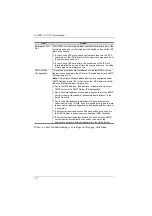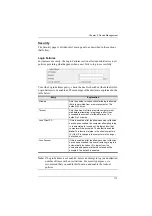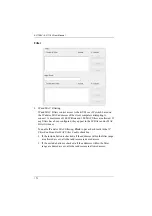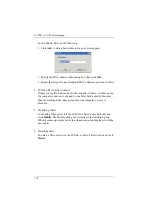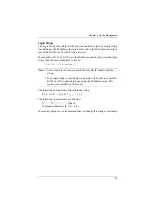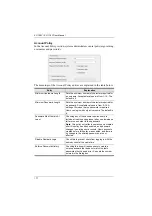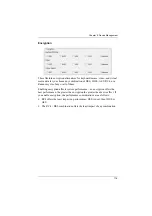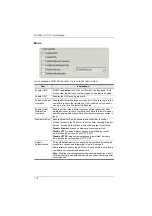
Chapter 9. Device Management
164
7. In the
Shared Secret
field, key in the character string that you want to
use for authentication between the KVM over IP switch and the
RADIUS Server. A minimum of 6 characters is required.
8. On the RADIUS server, Users can be authenticated with any of the
following methods:
Set the entry for the user as
su/xxxx
Where
xxxx
represents the Username given to the user when the
account was created on the KVM over IP switch.
Use the same Username on both the RADIUS server and the
KVM over IP switch.
Use the same Group name on both the RADIUS server and the
KVM over IP switch.
Use the same Username/Group name on both the RADIUS server
and the KVM over IP switch.
In each case, the user’s access rights are the ones assigned that were
assigned when the User of Group was created on the KVM over IP
switch. (See
LDAP / LDAPS Authentication and Authorization Settings
To allow authentication and authorization for the KVM over IP switch via
LDAP / LDAPS, refer to the information in the table, below:
Item
Action
Enable
Put a check in the
Enable
checkbox to allow LDAP / LDAPS
authentication and authorization.
Type
Click a radio button to specify whether to use LDAP or LDAPS.
LDAP Server IP
and Port
Select Preferred or Alternate LDAP Server and fill in the IP
address and port number for the LDAP or LDAPS server.
You can use the IPv4 address, the IPv6 address or the
domain name in the
LDAP Server
field.
For LDAP, the default port number is 389; for LDAPS, the
default port number is 636.
Admin DN
Consult the LDAP / LDAPS administrator to ascertain the
appropriate entry for this field. For example, the entry might
look like this:
ou=kn8132,dc=aten,dc=com
Admin Name
Key in the LDAP administrator’s username.
Password
Key in the LDAP administrator’s password.






















